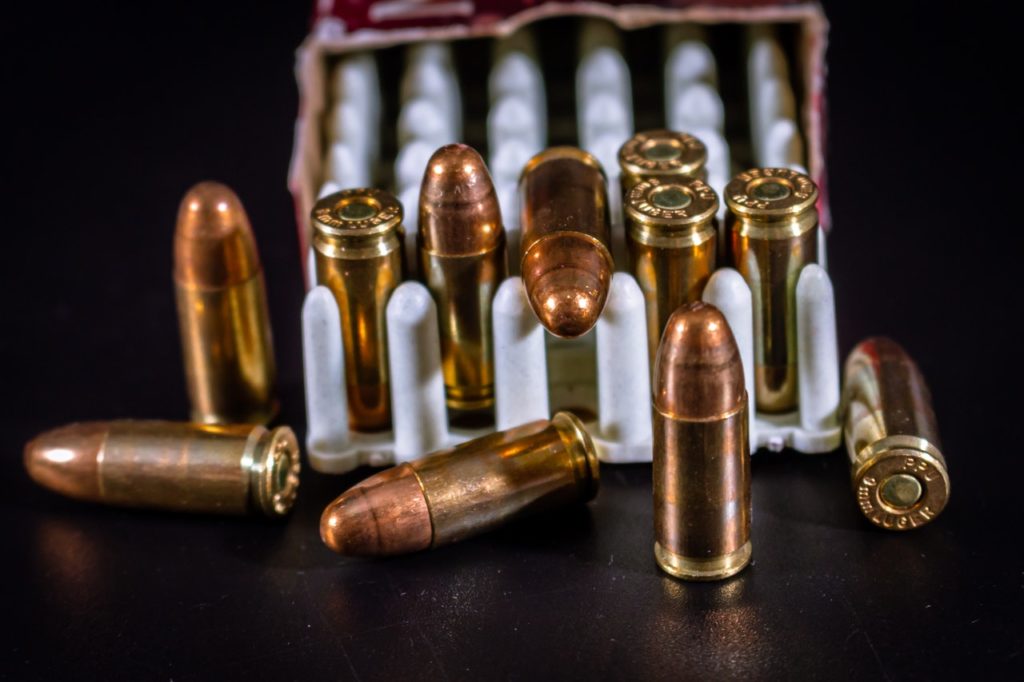
I learned this today. The caliber of a cartridge relates to the size of the gun’s barrel in hundreds of an inch in America or in mm in Europe.
A gun cartridge consists of four parts. It has an outer casing, usually made of brass because it is very good at handling the pressure of the explosion and is durable. The bottom half to two thirds of the cartridge casing is packed with propellant. This is usually black powder and is the chemical explosive. These days, smokeless powder is more common because it can make higher pressures. The top third of the cartridge is the bullet. Often, people say “bullet” to refer to the whole cartridge, but the bullet is just the projectile that leaves the gun. These can be made from lead, copper, steel, rubber, polymer, or wax, although lead is probably most common. Then there is the primer. This is the chemical that is ignited by the shock of the hammer and, in turn, ignites the black powder.
When the hammer falls, it ignites the primer. The primer ignites the black powder, which burns and expands. The expanding gas from the burning black powder creates pressure and when maximum pressure is reached, the bullet is forced down the barrel and out of the gun. The gases following the bullet are responsible for the sound, unless you are using a gun silencer. It typically takes about 1.5 milliseconds from pulling the trigger to the bullet leaving the barrel.
The word cartridge comes from “paper cartridge”. The first guns were invented in 1364 and they were loaded by pouring the gunpowder down the barrel, then loading in wadding to make it tight and dropping the bullet, a ball, down after it. A rod attached to the gun barrel was used to push everything down. The problem with this system was that it took about a minute to load a gun and the operator had to measure out the correct amount of gunpowder each time. Paper cartridges solved this problem by having a premeasured amount of gunpowder in them. They began life as a way of having the correct amount of powder and the operator could bite them open and pour the gunpowder into the barrel before ramming the bullet and paper in. They were coated in beeswax or tallow to keep them waterproof and stop the gunpowder igniting by accident. In 1842, the percussion cap was invented and the cartridge we know today slowly evolved from there.
One of the problems with the modern cartridge is that the cartridge stays in the gun. With a paper cartridge, the paper is fired out of the barrel with the bullet, and it is ready to fire again straight away. With a metal cartridge, a way of ejecting it from the barrel had to be found. A lot of gun malfunctions come from this problem. A revolver was fine because the spend cartridges stayed in the cylinder and could be replaced easily, but a rifle was more of a problem. A breech loading rifle was invented, but people were uneager to move to metal cartridges because of this problem. In the period after the American Civil War, cartridge development took off and more people used all-metallic cartridges with pinfire or rimfire mechanisms.
The first cartridge to be given a number name was the No. 56 cartridge. It was developed for the Spencer repeating rifle which the Union forces used in the American Civil War. It meant 0.56 inches, but that referred to the size of the chamber and not the size of the barrel. At this time, some manufacturers also named their cartridges after their weight in grains of black powder. Eg. 45-70-405. Some manufacturers still do this, such as the 30-30 Winchester.
Today, there are basically 4 ways that cartridge calibers are calculated. There is the weight in grains of smokeless black powder. There is the width of the gun bore in inches or the width of the gun bore in millimeters. And the gauge, which is mostly used for shotguns. The gauge is calculated by taking a lead ball that fits in the gun’s bore and calculating how many of those would fit in a pound. The caliber is usually written on the caliber of the gun because it can be confusing. There are often different names for the same cartridge size.
So, the word cartridge comes from the paper cartridges that soldiers used to load their guns with. The metal cartridges that we use today have different sizes to fit different guns. This size is the caliber. However, it can refer to the weight of the gunpowder, the size of the barrel in inches, the size of the barrel in mm, or the number of lead balls that would fit in a pound. Confusing. And this is what I learned today.
Photo by Terrance Barksdale from Pexels
Sources
https://en.wikipedia.org/wiki/Caliber
https://en.wikipedia.org/wiki/Cartridge_(firearms)
https://en.wikipedia.org/wiki/Paper_cartridge
https://en.wikipedia.org/wiki/Gauge_(firearms)
https://www.pewpewtactical.com/bullet-sizes-calibers-and-types/
https://en.wikipedia.org/wiki/Smokeless_powder
https://smallwarsjournal.com/jrnl/art/complete-history-small-arms-ammunition-and-cartridges
